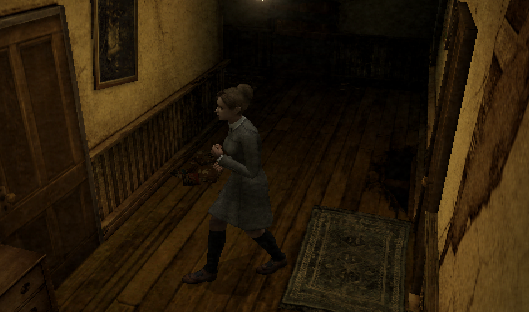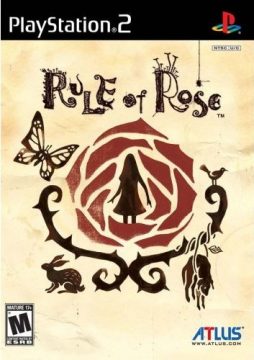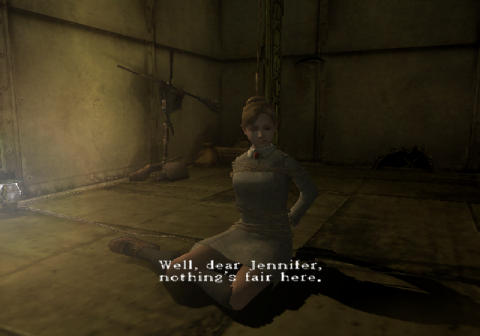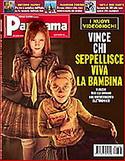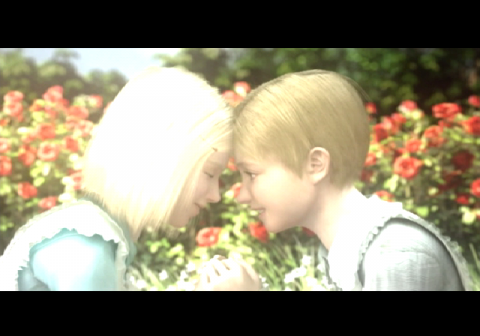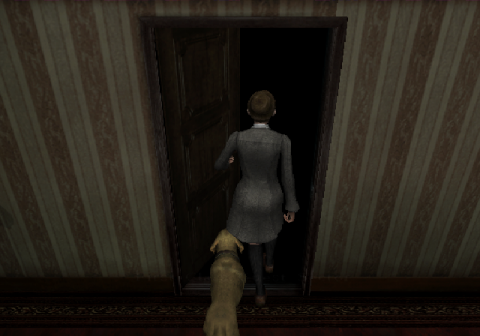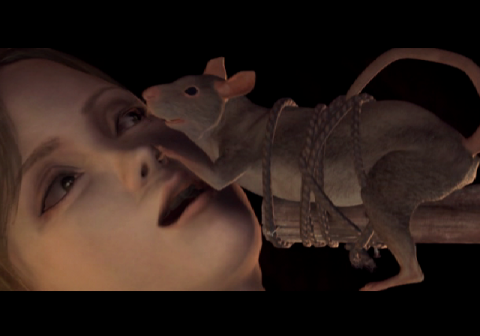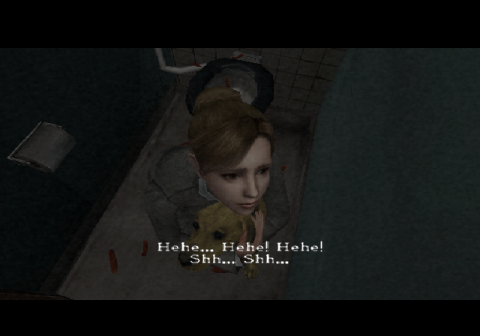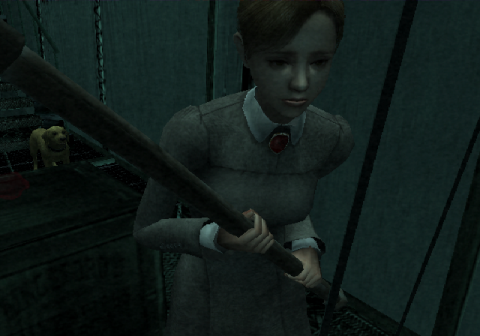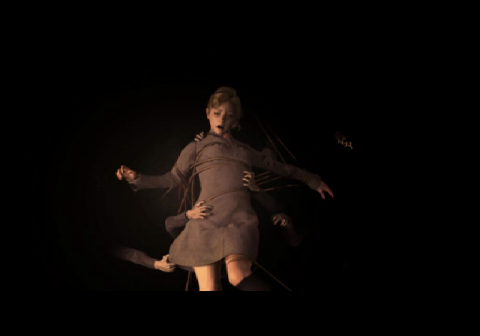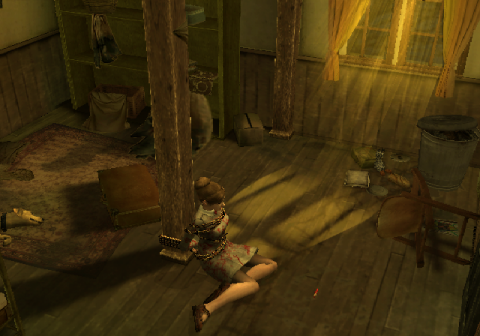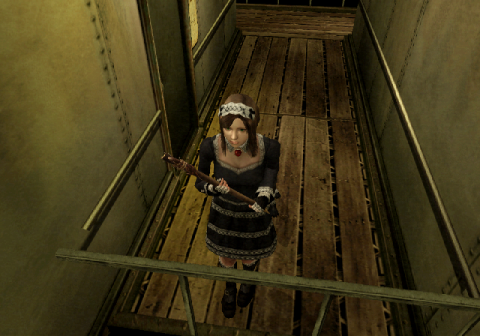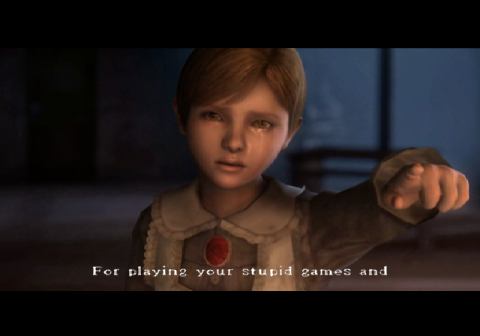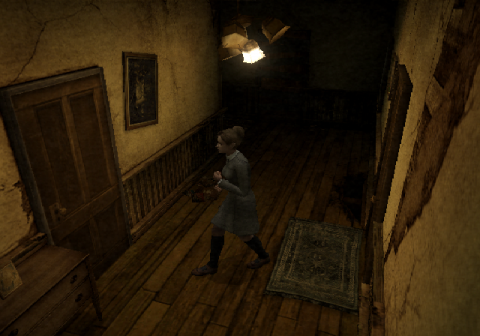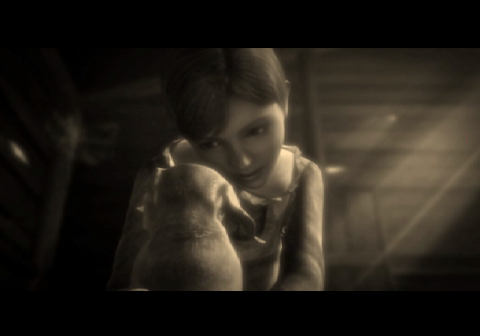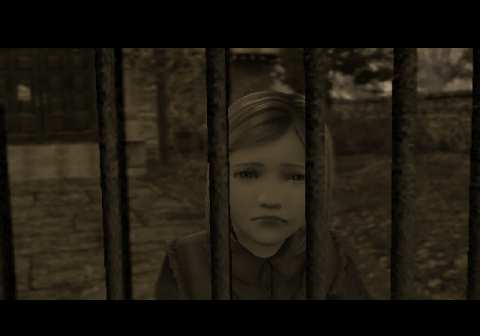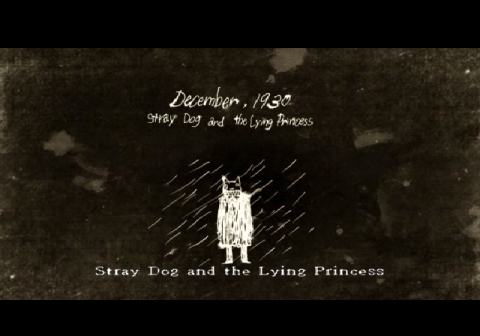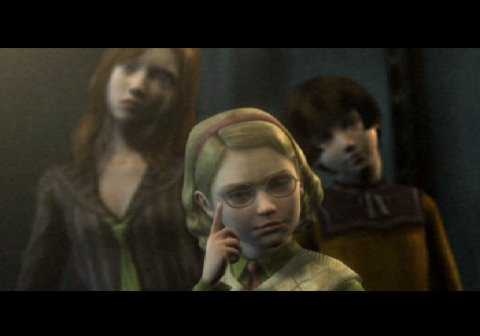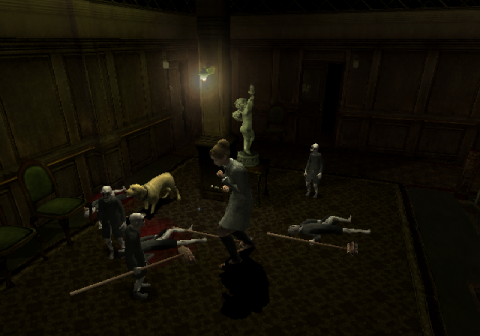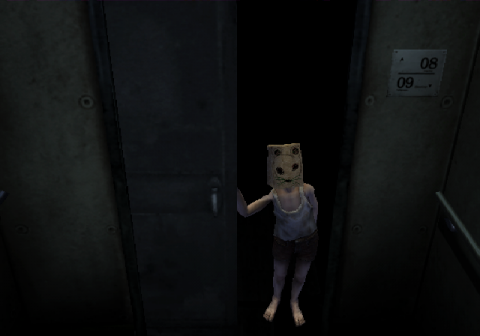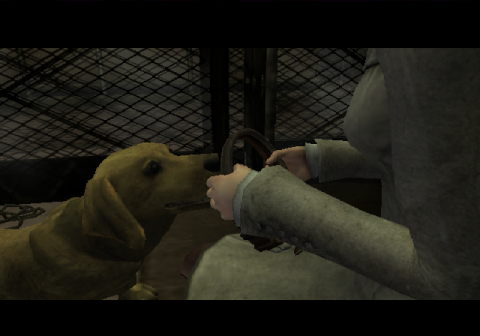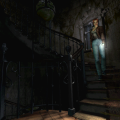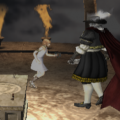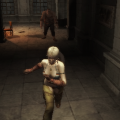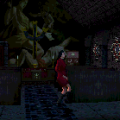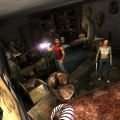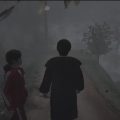Innocence can be the mindspring from which absurd rules and cruel behaviors are born …
– Rule of Rose
Rule of Rose is a rarity among survival-horror games: it is a game about children. Not just a game with a vulnerable or young protagonist, but a game set in a world filled with the fears and idiosyncrasies of children.
This is, however, a touchy subject.
If Rule of Rose is remembered at all, it is usually for the moral panic it inspired. Troubles seem to have started when Sony dropped the game for localization in North America, apparently feeling that the “sexual undertones” of the game clashed with the company’s brand image (Atlus, who doesn’t mind this kind of stuff, picked the game back up). Things got worse in a hurry when the Italian magazine Panorama featured the game on its front cover with the caption “Vince chi seppellisce viva la bambina” (“He who buries the little girl wins”). The connected article heavily criticised the game and video game violence in general.
After that, the rumor of the “child torture game” caught like wildfire. European Commissioner for Justice Franco Frattini called for censorship of video game violence and a ban of Rule of Rose in particular. The future of the European video game industry’s rating system, the PEGI, was put into question (the game did get a PEGI rating of 16+, though, meaning it was not meant for children). There were also demands for the creation of a European Observatory on childhood, whatever that is. Release of the game was cancelled in the UK and delayed in Australia. Mainland Europe also did its part, with many journalists and public official writing frenzied articles about the game.
In fact, Rule of Rose was directly mentioned in a bill of the French National Assembly and described in the following words: “The goal of the game is an unacceptable incarnation of sadism and perversion: raping a little girl in the most horrible conditions then torturing her before killing her in the worst of sufferings. The one who has acted with the most heinous ignominy, the most disgusting, wins the game.”
Strong words. It really must be some game, huh?
For example, here is the most explicitly sexual scene of the game:
Two little girls smiling complicity while holding hands and touching forehead to forehead. Shocking, right?
In the interest of full disclosure, there really are sexual undertones to the game, not to mention violence. After all, the game was inspired by Grimm’s fairy tales (the original ones). Yet while the game is not tame, it doesn’t live up to these absurdly lurid descriptions.
But let’s not get ahead of ourselves.
It all started when Sony asked Japanese company Punchline to make a horror game. Wanting to make something different from the usual Resident Evil fare, that’s when the idea of a game about children came up. Rule of Rose is a project that has quite a bit of creative pedigree in its blood. Punchline’s previous (and only other) project was Chulip, of all things, a game about kissing other people in order to make friends and get ever closer to the love of your life. Punchline was founded by an ex-Love-de-Lic employee, a company known for developing three extremely creative cult-hits (that never saw the light of day outside Japan).
Rule of Rose is the story of the Christina Ricci-esque Jennifer, who follows a mysterious boy into the Rose Garden Orphanage. It is stated outright that she was guided here to remember a promise from her past. She is then quickly brought into a large dirigible (a make-believe version of the orphanage in the mind of the children) and enrolled in the Red Crayon Aristocrat Club. Despite the fancy name and the fact that the children call themselves “prince” and “princess”, the Club is ruthless and cruel (by children’s standards) and its constant demand for tributes inspires backstabbing, punishment and fear. Jennifer mostly gets to suffer the whims of the three main girls: Diana, the eldest and most feminine, Meg the bookworm and Eleanor, the quiet one. “Filthy” Jennifer is at the bottom of their pecking order and has only one friend in the world, the dog Brown she saves early on.
Rule of Rose is set in the 1930s. While the graphics are on par for the PS2 (the color palette is however a bit drab, quite fond of the usual gray and brown), the game’s style makes very good use of its setting. The narrator speaks through silent movie-style inter-titles. In a manner befitting a dark fairy tale, his statements are often hyperbolic (“poor helpless unlucky girl”) and some inanimate objects also speak through the same stylistic device. The inventory menu is made to look like it was drawn in chalk on a blackboard. The instruction manual is also a sight to behold, filled with children’s crayon and pencil scribblings. The game has a grain filter that can, thankfully, be toned down (before going through the entire game… unlike, say, Silent Hill 2). The game is split into chapters. In each one, Jennifer finds a flippable storybook, which reflects the matter at hand and is usually a grim twist on a classic tale, like the Boy Who Cried Wolf, the Little Red Riding Hood, the Little Mermaid, Cinderella and so on.
Every horror game also has at least one visual theme going on. Silent Hill used rust, then ice, then rain, Alan Wake had darkness, Obscure had plants, Kuon had silkworms and so on. Rule of Rose has… bondage. It’s not as kinky as it sounds, although Jennifer does get tied up a lot. It’s mostly a background phenomenon, where a previously normal room becomes blocked by ropes stretching in odd directions, furniture hanging from the ceiling. Monsters are bound in unsettling ways. It’s effective because it’s so unusual. It also symbolizes the emotional “bonds” that tie the children together. There is also the theme of the rose. Blah, blah, roses represent love, but roses have thorns, tough love, etc. One last theme we’ll get to later on.
Following the historical setting, the soundtrack was entirely composed with classical instruments. It mainly features the cello, a good choice for both Psycho strings and expressing heavy nostalgia. The soundtrack is however quite short and repetitive. On the other hand, the main theme is heartbreaking, especially in its piano rendition.
Let’s get another thing out of the way. Rule of Rose, in its gamey parts, is boring. Terribly so. It’s all one big fetch quest, usually to find whatever gimmick the Aristocrat Club wants as tribute for the month. The orphanage, however, is large and confusing and its alter ego the airship (where most of the time is spent) even more so. To make things worse, the game sends you much more often in the dark, drab underbelly of the airship than in the fancy passenger sections. Rooms are small and movement between each one is accompanied by a slow door opening animation, Resident Evil-style. Oh, and Jennifer runs with the slow stunted gait of a submissive Japanese schoolgirl with cerebral palsy.
This where Brown the dog comes in. Brown will not do the fetching part of fetch quests, but he can be given any quest item to sniff and lead you to the next one in the series. While this helps navigate the labyrinthine airship, it’s still possible to feel lost. They also went overboard with the idea: almost every non-essential item (health pickups, trinkets and unlockables every survival horror is contractually obligated to have) is invisible and can only be discovered by the dog. Brown only sniffs for one type of item at a time, so he can bring you to the other end of the ship, only to later find something else inches from where you started.
Then there’s the combat. Jennifer fights even worse than she runs. What can you expect of a game where the first weapon is a dessert fork? There had to be some kind of enemies for this to qualify as survival horror, so little gray imps show up to murder you with brushes and dustpans. There’s an unlimited amount of them. Jennifer’s attack range is miserable. The “cinematic” camera angle, while great for mood, doesn’t help you gauge distance. It’s possible to get stuck and get mobbed to death by the little imps. Brown doesn’t even attack enemies (bad dog, bad!). At least, in Haunting Ground (another horror game starring a dog-and-girl duo), Hewie the dog had the decency to take a bite out of the opposition. The mermaid boss, a crying, acid-puking monstrosity pulled by ropes, has got to be one of the worst battles in all of survival horror, which is no small feat.
While the game lasts 6-8 hours, it doesn’t feel it. Sadly, while Rule of Rose has many qualities, it is not a game to be enjoyed; it has to be endured.
But how about all those terrible things the game is known for? You have to at least give some credit to the developers. They handled the subject matter with a lot more tact than the news articles let on. The girls do act out on each other in cruel ways (but not gruesome or obscene). The “highlight” is one girl being forced to put a stick with a live rat tied on it to another one’s face. Despite Panorama’s sensationalist title, no girl ever gets buried. While Jennifer does take quite a lot of punishment, she is portrayed as a 19 year old woman, but it’s implied that she was not when the events actually happened to her. It does soften the blow. Jennifer never fights children, she mostly fights with little monster imps. In fact, no child ever directly hits another child. The only exception happens when Jennifer slaps another girl… and it happens in a cutscene. It is not portrayed as cruelty, but instead as a great liberation, making a stand against the vicious Aristocrat Club. It’s an extremely effective scene, especially since the player had to bear just as much frustration to get there. Sometimes violence really is the answer, who knew?
As for sexuality, there isn’t much, really. All the girls are dressed sensibly. The girls also profess their “love” for one another, but only a sardonic mind would see it as anything other than platonic. There is however, enough to suggest that the headmaster of the orphanage had an inappropriate relationship with one of the girls. The girl, though still a teenager, is the oldest of all, so she’s considered an “adult” by the kids and is mostly ignored. Thus, little is known about her and nothing is shown. It’s hard to differentiate truth from make-believe in Rule of Rose and one can interpret events either way. As always, looking for one, clear-cut explanation in Japanese horror is fruitless.
Now, let’s talk about the ending, because, this is where the game gets really interesting. It is eventually revealed that the fulcrum on which all the game’s events rest is… Brown. Passions are unleashed and terrible things are done for none of the usual reasons… not for the love of a woman, or money, or world domination. It all happens for the love of a dog. How can that not make the story both more pathetic and more heartfelt? The dog is thus the game’s final theme. The dog is a symbol of unconditional love, friendship and loyalty. An appropriate companion in a world where everyone is out to get you.
However, the final boss is also a dog. It is Stray Dog, the children’s bogeyman given form in a man driven to murder over grief and madness. If you buy into the goofy premise that someone can be made to growl and walk on all fours, it’s actually pretty unsettling. Stray Dog is the flip side of the coin, the negative symbolism of the dog: subhuman, dangerous, uncontrollable, “filthy”. In many parts of the world being called a dog is a serious insult. (Not good enough? how about “bitch” then?). The only true method to beat Stray Dog is eerily creative: by giving him back his own gun. Only then will he regain his humanity long enough to do what must be done.
This is where most games would stop. Rule of Rose instead decides to add an extra epilogue chapter to the game, “Once upon a time”. Appropriately sepia-toned, the last chapter lets Jennifer run around the orphanage safely to reminisce about the past. The orphanage is transformed: there is sunlight, the laughter of children, birds chirping and Jennifer’s name is whispered in the wind. And that theme. The chapter completely changes the interpretation of the game: it puts into question the authenticity of many of the worse events and Jennifer reinterprets real unhappy events with much more aplomb. There are also a lot of happy memories. Many horror games are about repressed memories and facing your demons, but few are so effective at transitioning into other emotions like the mix of happiness and sadness that is nostalgia. There’s definitely something of the magic of childhood in there. Every tidbit of information related by Jennifer as an adult with the benefit of hindsight is so interesting it almost makes you sad to leave. The ending only comes when you walk out of your own free will and finish things where they started.
The epilogue is easily the best part of the game. It’s a shame many won’t have the patience to reach it.
So that’s Rule of Rose. It’s no Mary Poppins, but it’s not particularly exploitative. Rule of Rose probably hasn’t rotten many children’s mind, if only because barely anyone has ever played it. And yet, it was compared to the usual suspects: Grand Theft Auto and Doom. But it’s nothing like those. It’s slow and ponderous, quirky and cerebral. It has a feminine touch and a classical music soundtrack. It’s… artsy.
To put things into perspective, the movie Pan’s Labyrinth came out the same year as Rule of Rose. Both are quite similar: they star little girls that have to live in unnatural conditions (the Spanish Civil War, an orphanage) and who escape in a world of make-believe that is potentially even worse than their reality. In either case, whether or not the supernatural elements are real is open to interpretation. Pan’s Labyrinth received Oscars and its director went on to direct Hollywood blockbusters. Rule of Rose was mostly ignored and the only notoriety is has received was for allegedly being violent kiddie porn. It’s hard not to see this as a case study for how unfairly games are treated in mainstream media.
So there you have it, one of the enfants terribles of gaming. Not so terrible, is it? Except for the combat, maybe. If you can stomach it, however, it is a unique survival horror, one that shows how both magical and frightful childhood can be.
Links and sources:
Rule of Rose Mysteries All the speculation/theorizing you could ever ask for about the game.
Official Rule of Rose Website Official website, there’s an interview with the team in the “staff” section.
Julian Petley & al., Moral Panics in the Contemporary World, London, Bloomsbury Academic, 2013: a collection of essays containing an article on the hysteria surrounding Rule of Rose (Staksrud & Kirksaether, ”He who buries the little girl wins!’ Moral panics as double jeopardy.: the case of Rule of Rose.’).
